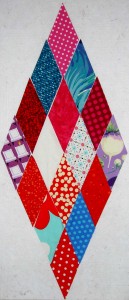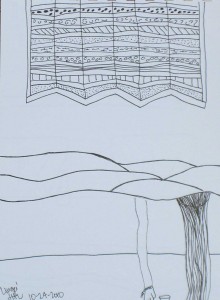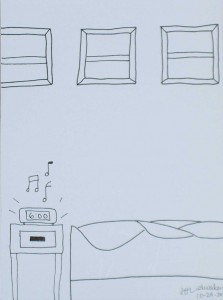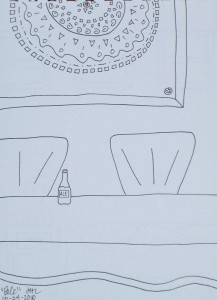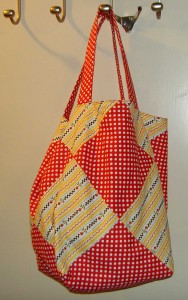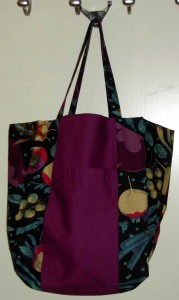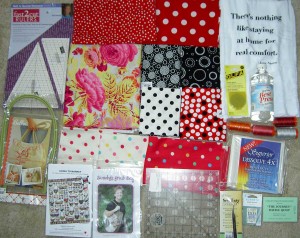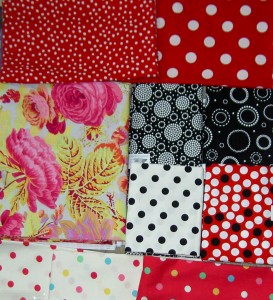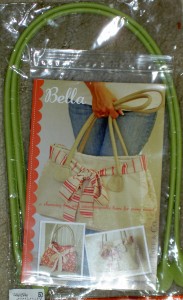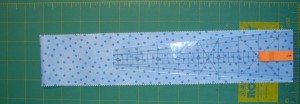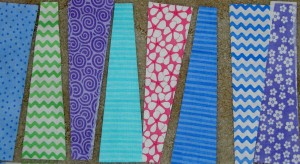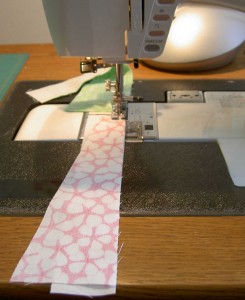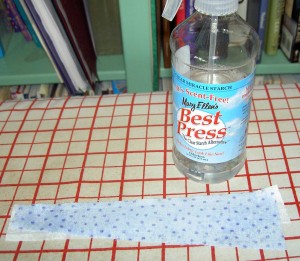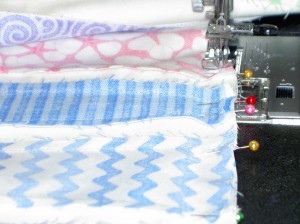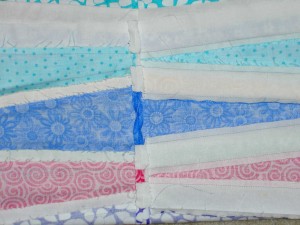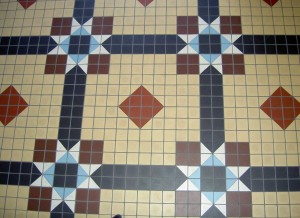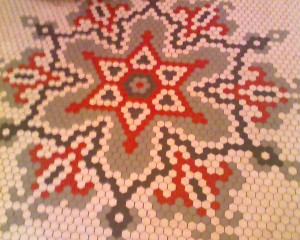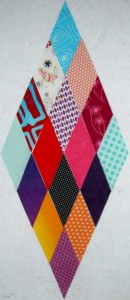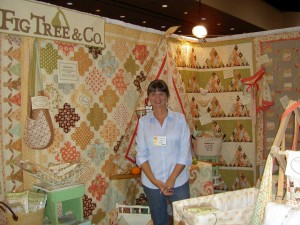 Creative Time and Space: Making Room for Making Art by Ricë Freeman-Zachery
Creative Time and Space: Making Room for Making Art by Ricë Freeman-Zachery
My rating: 4 of 5 stars
This book is primarily about attitude, time and learning to say YES to creativity as a valuable part of life.
The author offers up the concept of living a creative life and interviews artists on how each of them deals with that concept as a lifestyle, a problem, a way of life. the reporting on their variety of approaches is excellent, because it forced me to think about what my approach is/would be. Seeing that different approaches work for different artists is a reminder that it is okay for me to craft my own solution. I can see that there are a lot of different ways to say yes.
After I finished reading this book, I went back to look over my notes and it became apparent that I had a list of tasks for myself to work through as a result of reading this book.
1. “…figure out what time means to you and how to establish a good relationship with it.”
Figuring out what times means is complicated for me, but not impossible to figure out. It can be figured out in steps. For example, blocking off a certain time to make art is one way to come to terms with time. Each artist gives his/her opinion of the various topics in each chapter based on his/her experience. Roz Stendahl explains “You get so absorbed in what you are doing that time as conventionally measured just ceases to exist. Time becomes very full and rich in ways I don’t feel capable of explaining. It’s like a deep, full, and calm breath” (pg.16). Throughout the book, Freeman-Zachery has exercises and little added bits of information. Not only are these sidebars helpful, but they also break up the pages. Play is also discussed with regard to time.
Everyone talks about not having the ideas because of time. The culmination of the section implies that we should all think about our creativity all the time, adding creativity facilitating media into every spare minute. When we can’t generate ideas, because the car is full of soccer bound children and the sink full of dishes is demanding your attention, ideas can be inspired by books, podcasts, magazines and other media that get you in the mood to create. The idea is that “being able to keep your brain up and humming is a first step toward having more time…” (pg.25) Many of the artists feel that their “creativity comes first and they make everything else fit in.” (pg.25) Pam Rubert thinks that “injecting creativity into anything I can”(pg.25) is really important. It definitely makes life more pleasant.
The artist share different techniques and strategies they use to “make” time, which is the theme of chapter 2. There are examples of lists and schedules and solutions. The bottom line seems to be that you have to figure it out for yourself and go with it. Rice Freeman-Zachery sums up a lot of the discussion by implying that it is important to acknowledge how you work, when your best time to be most productive and working with the strategies you have developed, such as making lists, flitting from one thing to another, to work your best.
Finally, in one of the ‘try this’ sidebars, the author suggests “writing down ideas reinforces the value of creative thinking and encourages your brain to spend more time in creative mode.” (pg.30) AHHHHH! License to dream! Thanks, Rice!
2. Think differently: while this wasn’t an explicit “to do” item from the book, it is definitely a theme that weaves its way in and out of the book. The daily life of vacuuming, carpool and doing laundry is addressed head on and one artist says “..so I remind myself to continue to find the joy in these activities”(pg.33), which is followed a few lines later with Rice Freeman-Zachery‘s reminder that the “everything else in your life – the day job, the childcare, the household chores, lawn work and shopping – doesn’t have to be an interruption or an imposition. As you train your brain to spend more time in its creative mode, you’ll find ways to encourage creative thinking, no matter what you’re doing.”(pg.33) A good reminder and mantra.
3. Practice patience and flexibility: I know that I am very hard on myself – constantly striving for perfection: the perfect seam, the perfect combination of fabric and design, perfect everything. Roz stendahl reminds us to wonder “What could I get accomplished today if I let go of perfect?” (pg.84) Change is ok, say the artists and change back is okay, too! Novel, don’t you think?
4. Do groups, classes and interactions with other artists add to my creative life? This part of the book was still talking about time, and specifically what can a person give up to make more time to make. Vacuuming? Groups occurred to me. To what groups do I belong and how are they contributing to my creative life? What classes help? Which ones distract?
The chapter ends with the reminder “you choose what’s important and where you want to put your energy because only you can figure out what you can live with and what you can live without.”(pg.41) Sigh. I wanted a magic pill.
5. Be kinder to myself: Judy Wise says, at the beginning of chapter 3 “I am very gentle with myself, very forgiving at this stage of life. When I was younger I was much more disciplined, but then I realized that was killing the joy for me.”(pg.42) Another good thing to remember is that “it’s not just about changing what you are doing; it’s also about changing how you look at what you’re doing.” (pg.75) I have to say that these two points hit home. It is not productive to criticize yourself all the time. Perhaps the work doesn’t live up to your imagination, but it is a step on the path. Look at it that way and you will make progress. I have found, recently, that I can see patterns in my work. I can see patterns in quilts that are, seemingly, completely unrelated. By studying them further, perhaps I can discern the kind of progress I am making.
In chapter 3 a lot of the artists have written out their schedules. In this way, we can see that there are different ways of getting things done, and the standards are different for different people. One good tip was to “keep a master list of projects that are current and for each try to list at least the next actionable step.” (pg.47) My WIP list acts like this for me. It is not ideal and I do keep folders of info I need and ideas or drawings or notes on difficult construction issues. The WIP list is constantly in flux even though you see it once a year.It does spur me on to keep working on projects or actively abandon them. It is also a good reminder of how much I have accomplished in any given year. I’ll have to think about whether a list like Pam Rubert describes would work for me.
6. Write your goals: I have always had problems with this (commitment, mostly), especially the larger goals, but the author makes a good point “to speak them or write them makes them even more powerful.” (pg.51). I noticed when talking about goals the male artists seemed much more goal oriented and the female artists seemed much more fluid.
7. Warm up: if you are cold, it is harder to move. If you have just woken up, your thinking will be a little fuzzy. The same is true for me in the making process. I need to warm up. Warming up to me means sewing some four patches, mosaic piecing, some kind of rote sewing, something easy that I don’t have to think about. Warming up is also related to getting your muse to come out and play. Many artists have rituals that put them in their making ‘space’.
8. Figure out what is my play? The idea is that if a maker gets stuck s/he can go play. I think my play is working in my journal gluing things down, but I am hesitant to put that activity out there since I don’t collage much. Experiments and trials are not wasting time, but we all seem to think that they are. It can really be a struggle to allow yourself to go with an idea — to test, to experiment. It’s hard to accept failure as progress when you have spent all of your free time on a project that is deemed a failure. “For artists, it means that you can pursue an idea however far you need to go without having to rein yourself in, counting the minutes you’re ‘wasting’ in experiments and trials…” (pg.18)
The first part of the mental space chapter is really good. There are three quotes (plus one a few pages later) that are really important for me:
- “One of the biggest problems with granting creativity enough space in your thought and in your life is that it’s not seen as being valuable.” (pg.82)
- “This is nonsense. Creativity is stunningly important, as important as almost anything else you can name except maybe food, water and shelter.”(pg.82)
- “Your creativity is a vital part of you, one you need to be a fully functioning human being. Without it, you’re that proverbial shell of a person. You need it, and it needs you…” (pg.83)
- “Perhaps you are like a lot of us in that your brain, when left to its own devices, can become, as the excellent writer Anne Lamott says, a bad neighborhood you don’t want to go into alone. Left alone with nothing to occupy it, it will begin to gnaw on the terrors of termites and taxes, death and toothlessness and whether you remembered to renew your car tags. Filling that interior space with ideas about light and color and texture and mixing tubes of paint is ever so much better.”(pg.90)
9. Work in my space, wherever that is: I am fortunate to have a space that is good sized. It isn’t ideal, but it works for me. As I mentioned a few days ago, it needs to be prettied up and offer up more creative nudges, but it is mine (mostly) and I don’t have to ask anyone to use it or store fabric there or anything. Creative Time and Space spends a bit of time discussing physical space. The artists all have different physical spaces from huge former peanut butter factories to kitchen counters and a small desk in the corner of the room. The mantra is the same “if you’re serious about wanting to make art, you can figure out a way to do it in whatever space you have.” (pg.107)
10. Figure out how I work: In the chapter on physical space, the topic of how people work creeps in. Physical space and how a maker works go hand in hand. If you splatter paint, your living room with new carpet probably isn’t the place for you. Along with this concept is the right and wrong way to work. The long and short “don’t try to force yourself to work in a certain way just because you think that’s the way you’re supposed to work. Figure out what works for you and go with it.” (pg.113)
I still have Twyla Tharp‘s book, The Creative Habit, on my nightstand. Creative Time and Space makes me want to pick it up again and finish it. I probably won’t create an improvisational dance, but I think I will finish the book. 😉
One thing I didn’t like about this book was that the page numbers were hard to find and there was no chapter information on the bottom of the pages within a chapter. When I was on page 40, I didn’t know if I was still in chapter 2 on Making Time or already in Chapter 3 on Corralling Time. I didn’t realize I used this information, but, apparently, I do.
One thing I found was that I spent too much time reading this book. What I mean is that a lot of the time during the months I was, ostensibly, reading it, it was mostly in my briefcase being carried around and not being read. I think I should have read it all at once. Still, I am glad I finally finished it. There is a lot of food for thought. It is definitely a book I would read again.
View all of my reviews
